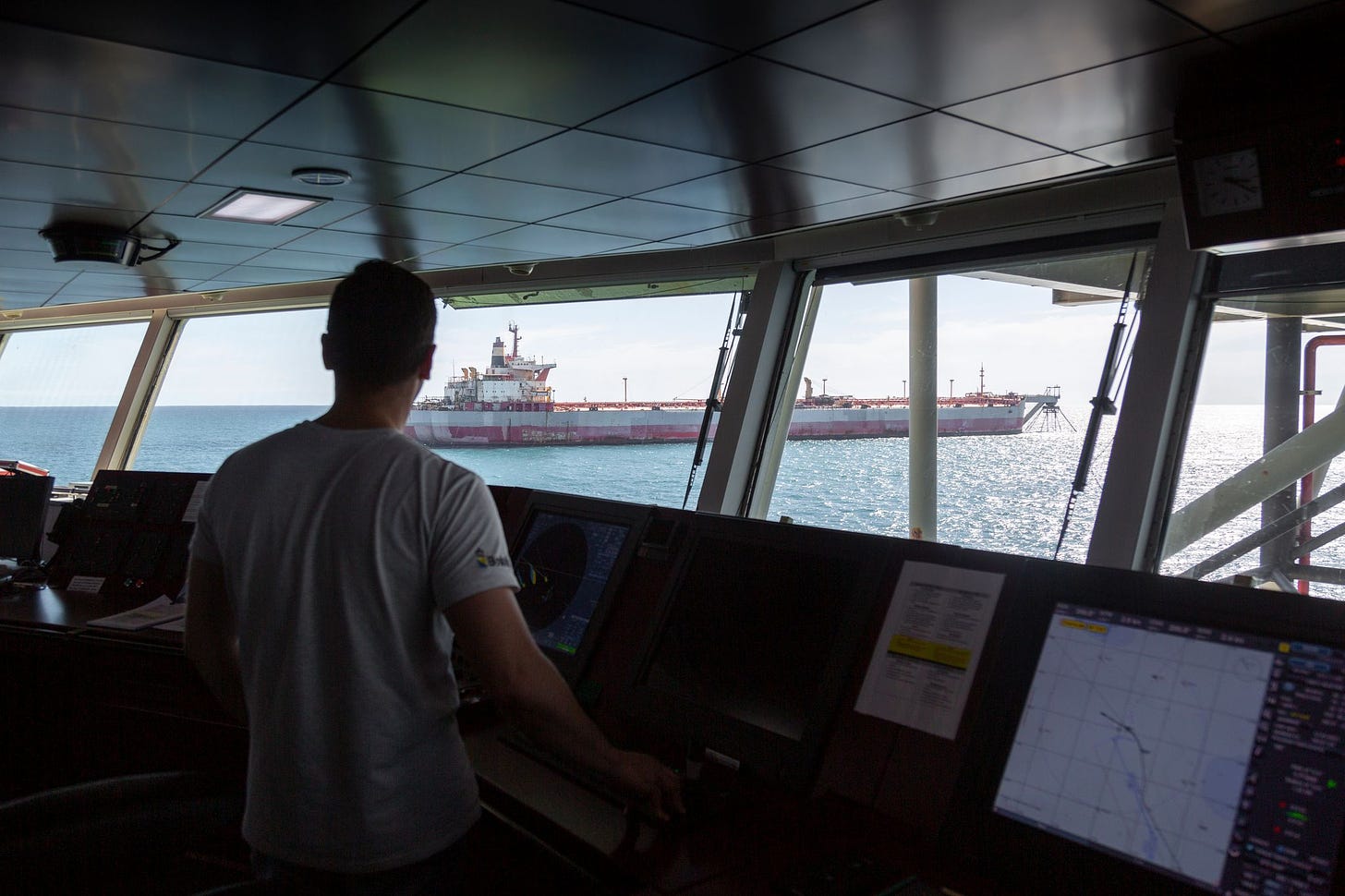FSO Safer: SMIT starts the inspection phase
The Safer has not been inspected since 2015. Plus other updates.
Recap and other recent announcements
Concrete milestones in regards to the FSO Safer emergency operation are beginning to be reached in quick succession, so a summary is first laid out below of where we are at before we get into the detail of the commencement of SMIT Salvage’s inspection phase:
The replacement VLCC Nautica set sail from China on 6 April and arrived in Djibouti on 7 May.
SMIT Salvage’s Ndeavor ship left Rotterdam on 20 April and reached Djibouti on 23 May; the Egyptian authorities waived any transit fees for its passage through the Suez Canal as their contribution to the UN mission, which can usually be hundreds of thousands of dollars.
The UN provided an update (30 May) on fundraising to the effect that US$29 million was still needed for all remaining tasks in the overall Safer mission. The UN’s Resident and Humanitarian Coordinator David Gressly said US$114 million had been raised and UNDP Administrator Achim Steiner detailed that US$14 million remains for the first stage (transfer of the oil off the Safer) and US$15 million for the second (CALM-buoy purchase and installation and scrapping of Safer).
On the ongoing question of what will happen to the oil onboard in terms of monetisation - which has never really been addressed due to disputes over who actually owns the oil1 - there are apparently ongoing discussions which according to UNDP Administrator Achim Steiner will “hopefully be clarified in the coming weeks.”
Ndeavor arrives next to the FSO Safer
After finalising an insurance policy package on 26 May for the operation, the SMIT Salvage vessel Ndeavor with 40 salvage experts and support staff onboard was given the go ahead to leave Djibouti on 29 May, arriving a day later near the FSO Safer which is moored just off the port of Ras Isa.
Onboard were press, as well as David Gressly:
Next steps and timelines
The first step will involve SMIT doing initial inspections and preparations as summarised by Maritime Executive:
The plan calls for the team to immediately begin a visual inspection of the FSO Safer while also taking measurements regarding the level of toxic gas. The ventilation system has reportedly not been operational since 2017. The salvage team will inspect the pumps and engine room, the status of the mooring arrangement, and assess the condition of the estimated 1.4 million barrels of light crude as well as the cargo lines, inert gas lines, valves, and manifolds.
The team is also carrying a portable inert gas generator which they plan to use to begin to stabilize the tanks on the FSO Safer. They expect it will take two weeks during this first phase of the operation and only then will the tanker purchased from Euronav arrive in Yemen.
Assuming there are no major issues then, this will take about two weeks, after which the Nautica can leave Djibouti; however, if problems do arise, then the operation will halt accordingly.
Once the all clear is given, then the second step will commence:
The actual transfer of the oil is expected to take 19 days between the two ships. During the final phase, which will require an additional 17 days, the salvage team will use a mobile spray tank cleaning machine. The residuals and dirty water will also be transferred to the Nautica.
For more detailed context, a UN press conference was held on 30 May including Achim Steiner and David Gressly:
David Gressly in the above press conference says 90% of oil is owned by Yemen government.




